On August 8th, “2017 China (Honghe) Sweater E-commerce B2B Business Model Innovation Forum†was held at Jiaxing Honghe Sweater Market E-Commerce Zhongchuang Base. The forum takes the innovation of the business model of the apparel industry as the core, and more than 200 leading industry experts, innovative entrepreneurs and representatives of major domestic textile textile market participants. Cao Lei, director of China E-Commerce Research Center and expert member of China Garment Association, was invited to attend an important speech. Industry elites gathered together to discuss the development status of China's textile and apparel industry in the field of B2B e-commerce, and explore the sweater industry in the B2B business model. The future development trend.
It is reported that this event was hosted by China National Textile and Apparel Federation Distribution Branch, China Textile Industry Federation Industrial Cluster Working Committee, China Wool Textile Industry Association, Jiaxing Xiuzhou District People's Government, Honghe Town People's Government, Zhejiang Netlink Sweater Hui Technology Co., Ltd. is co-organized by China Textile and Apparel E-Commerce Alliance and China Fashion New Brand Business Alliance.
At the meeting, Cao Lei, director of the China E-Commerce Research Center, gave a keynote speech entitled "Under the New Retail Era: The Road to Innovation in China's Clothing E-commerce Model."
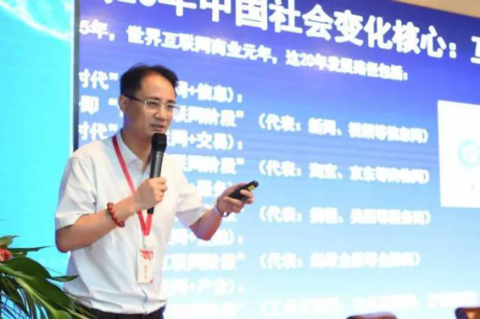
[The clothing industry is the biggest contributor to e-commerce]
Cao Lei said that e-commerce has been developing for nearly 20 years, starting in 1997 and 1998, but in recent years, the total transaction volume of e-commerce consumer goods retail sales only accounted for 4.8% of the total transaction volume, which means that this circulation under the line is still accounting for Absolutely big head. However, the penetration rate of clothing and textiles, especially clothing, is relatively high. The China Garment Association's "China Garment E-Commerce Report" commissioned by the China E-Commerce Research Center shows that the penetration rate of clothing in recent years is 30%-40%.
Fashion changes require apparel companies to track market conditions in real time, anticipate changes in customer demand, and respond quickly to customer requests. E-commerce, through the survey of user interest and the collection of customer feedback, provides precisely for companies to achieve this goal. Low-cost technical means. According to the monitoring data of the China Electronic Commerce Research Center, in recent years, the scale of online shopping transactions in China has gradually expanded.
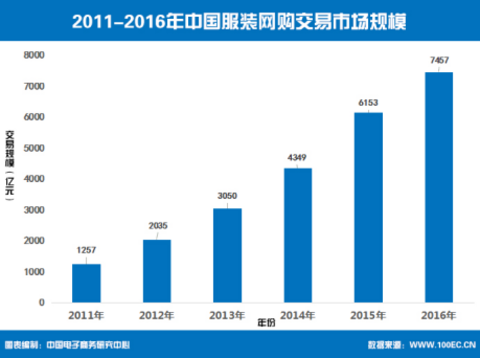
(Photo: China clothing network transaction scale 2011-2016)
Cao Lei, director of the China E-Commerce Research Center, pointed out that the clothing industry is the biggest contributor to e-commerce, providing e-commerce providers with more than just sources of supply. According to the industry chain map compiled by China E-Commerce Research Center, among the top 10 e-commerce platforms in China, Taobao, the largest e-commerce platform, relies on clothing to start. Dangdang and Amazon use books as the entry point, and the beauty of Jumei is its beauty. A core starting category; Jingdong, Suning, Gome 3C appliances and Yixun also have their dominant categories. This means that the country's textile and garment enterprises are working for Taobao, the platform earns a big profit, and the clothing enterprises can only get a bowl of money. The total profit of Taobao is even greater than the profits of the national textile enterprises.
Cao Lei divides the clothing e-commerce market into the following categories:
1) Platform e-commerce: Taobao, Tmall, Jingdong, Vipshop, Suning Tesco, etc.;
2) Vertical e-commerce: Beauty said, Mushroom Street, State Shopping Network, Dream Bazaar, Vanke Eslite, Lancome, etc.;
3) O2O e-commerce: Uniqlo, Qizhi clothing, Hongling Group, Yibang people, etc.;
4) Amoy brand: Handu clothing, Inman, split, seven grid, etc.;
5) Brands: Taiping Bird, Seven Wolves, Youngor, Ou Shili, Bosideng, Li Ning, etc.;
6) B2B e-commerce: China's clothing network, search, batch to network, easy network, Shanglai network Sinbad, clothing network, China Silk Network, etc.;
7) C2M e-commerce: quantity, necessary mall.
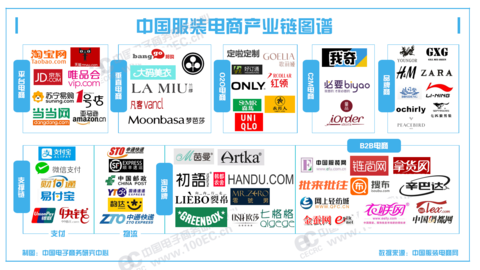
(Note: China clothing e-commerce industry chain map)
[How to brand the new retail era clothing network +]
First, use big data to sharply capture the popular styles and fabrics this year, and use big data to guide research and development and production.
Second, we must borrow a boat to go out to sea and stand on a large platform to help brands quickly reach 1 billion consumers. There are many modes that can be used in particular. In addition to the traditional e-commerce, the recent selection of Ding Lei's NetEase is an example. The ODM model is adopted, and the big-name display platform for traditional brands is used for OEM, and the style of cotton and linen is used. The product is displayed. Honghe's wool sweater can be promoted by this model.
Third, new retail thinking, better customer service. Relying on the Internet, through the application of big data, cloud computing, Internet of Things, artificial intelligence and other means, based on online + offline + logistics data, the core is consumer-centric membership, payment, inventory, services and other data comprehensive Sharing, thus achieving full integration of online and offline. The production, distribution, display, sales and all-round upgrades of the corresponding products have reshaped the structure and ecology of the business.
Fourth, increase the research and development of new products, continue to upgrade and replace, and be interconnected and intelligent in the manufacturing process. If the clothing e-commerce platform has financing needs, it does not need to pass the traditional private usury loan method. According to the transaction data record, hundreds of thousands and millions of loans can be obtained. This is the role of reputation data.
Fifth, to force cross-border e-commerce, go abroad to make their own brand. In general, our domestic clothing brands, the added value of the brand is still very low, a few people have the idea of ​​establishing an international brand. Foreign brands of cotton-spun scarves sell for three to four thousand each, but the price of homogenous products made in China is far from the same, and the road to branding is still far away.
[Internetization mode of the clothing industry]
1. B2S mode--taking the Internet of Things as an example
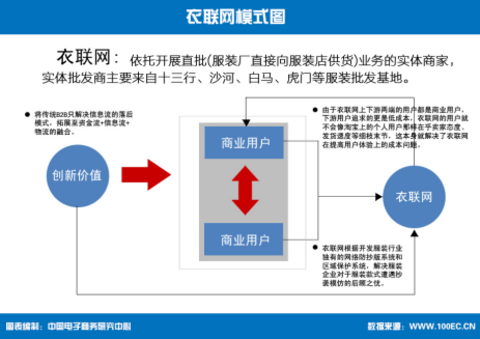
2. C2M mode--taking Red Collar Group as an example
The red collar is known as the “model of Industry 4.0 combining personalization and mass productionâ€, and the number of people visiting each year is endless. Nowadays, the traditional channels are slowly disappearing, and the supermarkets and department stores are all right. The products are personalized and the models tailored to customers are more popular.
Cao Lei mentioned that there is a clothing and luggage market near Jiaxing, which is very popular. However, after a while, it is still a brand of “hot opening†and “hot investmentâ€, but it is actually a door-to-door. This phenomenon is not a case in the country. .
3, O2O mode (store) - Take Uniqlo as an example
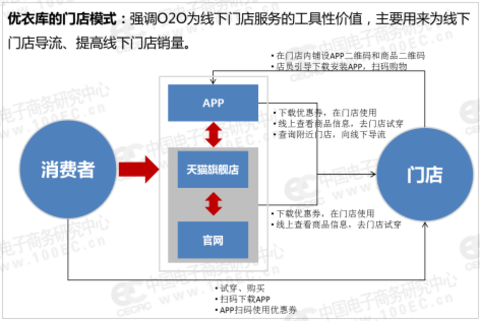
4, clothing intelligence
In recent years, the wave of smart wearable devices has spread from bracelets and watches to the clothing market. Many industry insiders believe that in 2016, the development and sales of smart clothing will enter a new development fast lane, and its light will also cover Wearable objects such as smart watches and smart glasses have become the representatives of a new round of development in the field of smart wear.
Smart clothing can even combine biosensing and conductive nanofabrics to obtain information such as heart rate, heart rate recovery index, heart fatigue, heart age, and aerobic/anaerobic exercise heart rate guidance.

With the support of technology, the fabrics of the existing garments can change the color of the clothes according to the cold changes of the weather and the intensity of the sunlight. It can also analyze whether your approval is too imaginary or too tired according to the composition of the body sweat. Thereby health management.
Here, Cao Lei listed the owner of a former usury in Jiaxing, transformed the Internet+, and became the CEO of Internet finance company, lending the funds to several woolen sweater companies in Jiaxing. But at the end of the year, these companies are still unable to pay their debts. The CEO packaged a stock of 1,000 yuan a pound of clothing sweaters, and acquired a team operated by an e-commerce platform in Hangzhou, and then sold it through high-priced e-commerce platforms such as Taobao, Tmall, and Vipshop. A group of glamorous net red models were sold. For a chestnut, the price of the commodity is written on the original price of 588, and the special price of 188 yuan is sold out, and finally sold out. Not only earned money, but also earned money for the second time. It can be seen that as long as there is Internet thinking, the traditional enterprise transformation Internet + has no "ceiling".
Finally, Cao Lei gave the clothing enterprise Internet +10 major entry points, first, the sales channel e-commerce, and second, the terminal platform mobile. Third, marketing promotion is based on social interaction, allowing users to help users develop their own users, through the Internet social platform to guide everyone, attracting investment, wholesale, and one more is that user needs are being personalized. At the same time, to the intelligent function of products, the network of financing channels, the dataization of business decision-making, and the lighter production and manufacturing, it is now possible to carry out cloudization of software services based on SaaS cloud services, while at the same time personalizing and entertaining on the packaging, rather than being uniform. This is some of the Internet thinking that Honghe textile sweaters and apparel companies need.
It is reported that the participants of this forum are: Cao Tingrui, Director of Textiles Department of the Consumer Goods Industry Department of the Ministry of Industry and Information Technology, Xia Lingmin, Vice President of the China National Textile and Apparel Council, and Vice President of the China National Textile and Apparel Council, China Wool Textiles Peng Yanli, President of the Industry Association, Secretary General of the Industry Cluster Working Committee of the China National Textile and Apparel Council, Xing Guanlei, Vice President of the China Textile Industry Enterprise Management Association, Zhang Haiyan, Vice President and Secretary General of the China Textile Industry Federation, and Huicong Group Partner and general manager of Yunxin Big Data Yao Yongchao, Zhejiang Netlink Chairman Mao Minghui Technology Co., Ltd. Chairman Yao Mingliang, "Airborne Brothel" CEO Zhang Chengchao, Zhejiang Industrial and Commercial University Modern Business Research Center Deputy Director Zhao Haoxing and other industries Experts work together to strengthen the construction of e-commerce public services, integrate industrial resources, build an Internet + professional market, and create a good corporate e-commerce application environment and atmosphere.
As a domestic first-line e-commerce and authoritative expert in the Internet field, Cao Lei, director of the China E-Commerce Research Center, is also employed or employed by: China E-Commerce Expert Library Expert, Member of China Apparel Association Expert Committee, China Garment Industry Yearbook, China Apparel E-Commerce Operation Report Chief editor, employed in the “Twelfth Five-Year Plan†planning group of e-commerce in many provinces and cities across the country. Each year, it receives thousands of interviews with central media and financial media at home and abroad, and is an authoritative “opinion leader†for e-commerce and Internet+.

Cao Lei was repeatedly invited to attend major e-commerce summits to deliver important speeches, and his views became the industry's "wind vane." In addition, it has been repeatedly invited to do provincial and municipal, forums, universities, and enterprises to do thematic reports, accumulating nearly 1,000 enterprises and tens of thousands of people in actual combat training, becoming a strategic consultant for traditional enterprise transformation e-commerce, and a “think tank†for government Internet+.
Editor in charge: Wang Zhen
Acetate Sunglasses,Thick Acetate Sunglasses,Women Acetate Sunglasses,Cat Eye Shape Fashion Sunglasses
Wenzhou Joysee Eyewear Company Ltd. , https://www.joysee-glasses.com